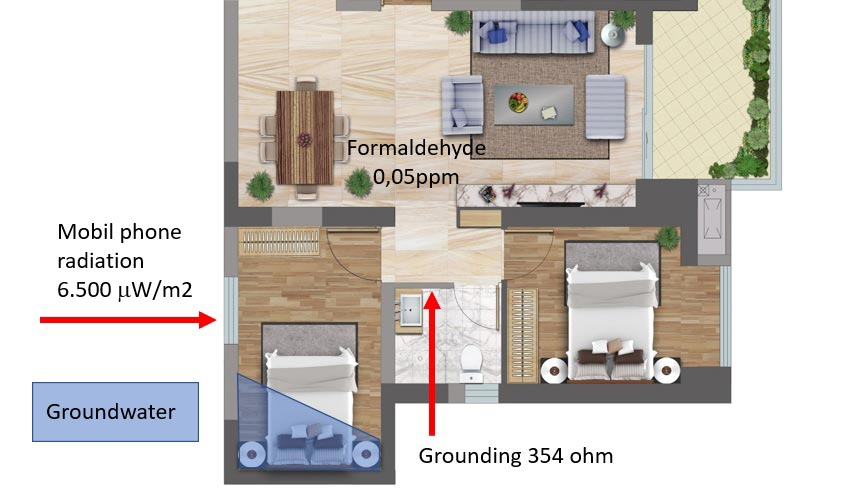BIOHABITABILITY
For thousands of years we have known of the existence of places where life and, by extension, human activities take place in a more favourable and healthy way.
On the other hand, there are less favourable places, usually associated with electromagnetic or chemical pollution, where people who spend a lot of time do not sleep well or even get sick more easily.
WHAT IS BIOHABITABILITY?
Biohabitability is the science that identifies, measures and interprets environmental anomalies in indoor spaces that may be critical to people’s well-being and health.
Based on the reference values of baubiologie, precautionary values for sleeping and sleeping areas, solutions are proposed to help people to live in a home that is as clean and natural as possible.

COMMON SYMPTOMS OF AN UNHEALTHY HABITAT
- Sleeping better in hotels than at home.
- Waking up in the morning with a headache or the feeling of not having slept.
- Habitually waking up in the middle of the night.
- Getting sick frequently since moving to a new house.
- Coughing in spaces such as the office or at home and not coughing outdoors.
WHAT PARAMETERS DOES BIOHABITABILITY TAKE INTO ACCOUNT?
Biohabitability studies:
- Electromagnetic radiation, such as that generated by telecommunications and power distribution lines.
- Environmental toxics, such as volatile organic compounds, heavy metals, formaldehyde, radon gas.
- Natural radiation from the ground, such as from geologic faults or groundwater.
- Comfort parameters, such as humidity or noise

WHICH SOLUTIONS DOES BIOHABITABILITY PROPOSE?
A detailed technical report is drawn up comparing the measured values of each pollutant with the baubiologie reference values.
Depending on the measured values, changes in the organization of the space, improvements in electrical installations, elimination of polluting sources, etc., can be proposed.
HOW CAN I KNOW IF THE HOME IS HEALTHY?
The most comprehensive biohabitability study includes the Geobiological Survey and the Indoor Air Toxics Survey.
Depending on the symptoms, you may choose only one of the studies.




